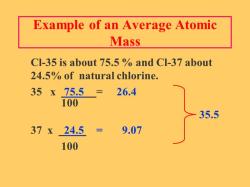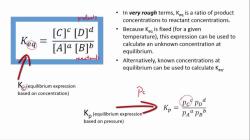What is endogenous (internal) control?
In scientific contexts, particularly in molecular biology and experimental research, an endogenous control, also known as an internal control, refers to a component within the experimental system that is used as a reference point for normalizing experimental data. The purpose of incorporating an endogenous control is to account for variations that may occur during the experimental process, such as differences in sample quantity, quality, or efficiency of the experimental procedure.
Here are some key points regarding endogenous controls:
Definition:
- An endogenous control is a component, often a gene or a protein, that is naturally present in the experimental system and is used as a baseline for comparison in quantitative analyses.
Normalization:
- The primary function of an endogenous control is to normalize data by providing a stable reference point. Normalization helps correct for experimental variations, ensuring that observed changes are more likely due to the experimental conditions rather than technical artifacts.
Stability Across Conditions:
- Ideally, an endogenous control should exhibit stable expression or abundance across different experimental conditions. This stability is crucial to accurately reflect changes in the target genes or proteins of interest.
Selection Criteria:
- The selection of an appropriate endogenous control is a critical step in experimental design. Common endogenous controls include housekeeping genes (genes that are constitutively expressed in the cells) or internal standards.
Quantitative PCR (qPCR):
- In gene expression studies using quantitative PCR (qPCR), an endogenous control is often used to normalize gene expression levels. The cycle threshold (Ct) values of the target genes are compared to the Ct values of the endogenous control to calculate relative expression.
Western Blotting:
- In protein studies using techniques like Western blotting, an endogenous control protein with stable expression is used for normalization. The intensity of the bands corresponding to the protein of interest is compared to the intensity of the bands of the endogenous control.
Experimental Variables:
- Endogenous controls can also be used to account for variations introduced during sample preparation, handling, or other experimental steps. They act as internal benchmarks to ensure the reliability of the results.
The choice of an appropriate endogenous control is context-dependent and may vary based on the specific experiment, the type of samples used, and the research goals. It is crucial to validate the stability of the chosen endogenous control under the experimental conditions to ensure the accuracy of the normalization process.
In scientific contexts, the term "endogenous (internal) control" refers to a reference point or standard used to normalize or calibrate measurements within an experiment. It serves as a benchmark against which experimental results can be compared to account for inherent variations in the experimental system or methodology.
Purpose of Endogenous Controls:
Endogenous controls play a crucial role in scientific research by providing a stable and consistent reference point, allowing researchers to:
Normalize gene expression data: In gene expression studies, endogenous controls are used to normalize the expression levels of target genes, compensating for variations in sample quality, RNA extraction efficiency, and cDNA synthesis.
Account for experimental variations: Endogenous controls help account for inherent variations in experimental conditions, such as temperature, enzyme activity, or reagent concentrations.
Validate experimental results: By comparing experimental results to stable endogenous controls, researchers can assess the validity and reliability of their findings.
Examples of Endogenous Controls:
Housekeeping genes: Housekeeping genes are genes that are constitutively expressed in all cells and tissues, making them suitable endogenous controls for gene expression studies. Examples include glyceraldehyde-3-phosphate dehydrogenase (GAPDH), β-actin, and 18S ribosomal RNA (rRNA).
Reference genes: Reference genes are genes that are expressed at a constant level under different experimental conditions and are not affected by the treatment or variable of interest. They are often used as endogenous controls in studies involving gene expression profiling or biomarker analysis.
Internal standards: In analytical chemistry, internal standards are known concentrations of compounds added to samples to quantify the concentration of analytes of interest. They serve as endogenous controls by providing a reference point for comparison.
Negative controls: Negative controls are samples that lack the treatment or variable of interest and are used to establish a baseline level of measurement. They act as endogenous controls by providing a reference point for assessing the effects of the experimental manipulation.
Untreated samples: Untreated samples, or control samples, are samples that have not been subjected to the experimental treatment or variable of interest. They serve as endogenous controls by providing a reference point for comparison with treated samples.
In summary, endogenous controls are essential tools in scientific research, providing a stable and consistent reference point to normalize measurements, account for experimental variations, and validate experimental results. Their use ensures the accuracy, reliability, and reproducibility of scientific findings.













